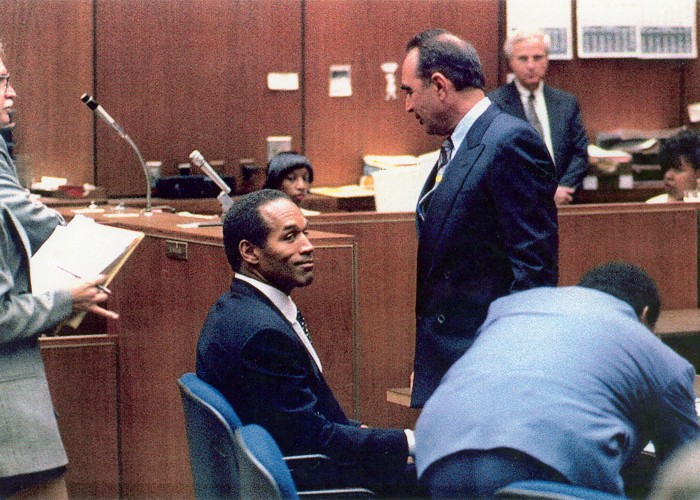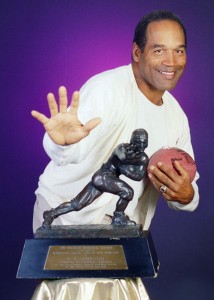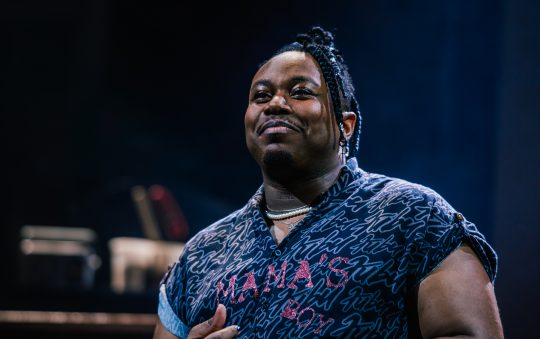On 20th anniversary of the ‘Trial of the Century” photojournalist who covered the event pronounces sentence

October 3rd marked the 20th anniversary of the culmination of the O.J. Simpson double murder trial. That trial ended in Simpson being found not guilty for the murders of his ex-wife, Nicole Brown-Simpson, and Ron Goldman, a waiter at Brentwood (CA) restaurant Mezzaluna. 20 years later, Haywood Galbreath, a daily observer of the trial pronounced his own sentence of the media and their coverage of the trial: guilty.
Simpson, a successful actor and former stand-out college and professional football player, was charged with the June 13, 1994 murders of his ex-wife and Goldman. Brown-Simpson had dined at Mezzaluna earlier in the evening and left a pair of sunglasses. Goldman was returning the glasses to the regular patron who lived not far from the restaurant, when he was attacked and felled not far from where Brown-Simpson’s body lay in the courtyard of her condominium.
Police allege evidence they collected at the scene led to O.J. Simpson, Brown-Simpson’ estranged husband, being identified as the culprit. Simpson, through his attorneys, agreed to turn himself in for questioning, but failed to do so and instead embarked on a drive throughout various cities in Los Angeles County, allegedly threatening to kill himself in the backseat of his car which was driven by his friend Al Cowlings. Numerous police cars and helicopters followed Simpson for about an hour and a half before he returned to his Brentwood home, eventually surrendering to police.
Haywood Galbreath has been a photojournalist for more than 30 years. He’s covered five U.S. Presidents, including Barack Obama’s 2008 White House run, as well as provided photos to hundreds of local and national outlets during his career. Born in Mayfield, Kentucky, he is entered into the Notable Kentucky African Americans Database, and he is a recipient of the Ford Motor Company Fund’s 2013 Ford Freedom Unsung Award.
Galbreath has seen and done a lot in his career, but one thing that may be said to have brought him the most pride – as well as consternation – is O.J. Simpson’s murder trial.
“I was one of only two journalists in the world who sat through that trial from beginning to end,” said Galbreath in an interview with the Sentinel.” I spent 15 months total covering it. And I can tell you, the American public has been deceived.”
Galbreath says he was privy to all of the information presented at trial (as well as information from a variety of sources that did not make it into evidence). Based on what he saw at the trial, as well as what he calls a “healthy dose” of common sense, Galbreath says that it is the mainstream media that is guilty, but that O.J. Simpson and the Black community collectively are the ones who have been painted as being the guilty ones.
“During the trial and for the past 20 years, mainstream media has misrepresented the truth about what took place in the O.J. Simpson double murder trial. They twisted what you saw.”
Scholars of the Simpson case have noted that the L.A. Times consistently carried the trial on its front page for almost one year after the murders, and legal scholar Alan Dershowitz wrote in his 2004 book on the case “America on Trial: Inside the Legal Battles that Transformed Our Nation,” that the Simpson trial was covered “in 2,237 news segments from 1994 through 1997.”

Such voluminous coverage should probably be expected to make one or two miss steps, but Galbreath says that is not what happened. Galbreath argues that people who watched the trial every day came away with one opinion, and that everybody else who got their information from TV, newspapers or nightly pundits are of the opinion that 1) OJ is guilty, 2) Johnnie Cochran and his defense team injected race into the trial and operated unethically, that 3) OJ’s documented history of abuse toward Nicole Brown-Simpson led directly to her murder, and that 4) the predominantly African American jury was not intelligent enough to understand the intricacies of DNA and other trial evidence, and acquitted a murderer out of a sense of racial solidarity.
According to Galbreath, this was deliberate.
“If you sat in that courtroom every day and you saw what they called ‘a mountain of evidence,’ you knew that that mountain of evidence was a molehill,” said Galbreath.
Galbreath’s argument that mainstream media worked in collusion with police and the justice system to portray Simpson as guilty is not a new charge. Approximately two weeks after the murders, Time Magazine published an issue with a darkened mug shot of Simpson on its cover. Many observers noted the photo made Simpson look “dangerous” and “menacing.”
The charge of media collusion is also not new to the Simpson double murder trial. Numerous historians and scholars have pointed out how media in a white supremacist society often takes the side of a predominantly white populace when the perpetrators of crimes are Black.

While Ida B. Wells was leading a crusade against lynching in the American South, numerous Southern newspapers would both openly call for and announce the lynchings of African Americans, and then provide detailed, blow-by-blow coverage of the lynchings in the next day’s papers.
According to Galbreath, it was not Simpson’s defense team that injected race into the trial, but 1) the police once they realized that “a white woman (Brown-Simpson) may have been killed by her Black ex-husband, and also 2) the justice system when they decided to place African American Deputy District Attorney Christopher Darden the co-counsel on the case.
Galbreath says that Darden has basically admitted as much, based on interviews given at that time.
Galbreath’s experiences as an African American photojournalist, both prior to and after the Simpson double murder trial, have convinced him that the Black Press is more objective when it comes to matters of race than mainstream media in the United States.
“We need to have our own images, we need to plead our own cause,” says Galbreath, on why he insisted on the Black Press having access to the trial. Galbreath says he has more than 18,000 images from the trial. One of Galbreath’s photographs graces the back cover of O.J. Simpson’s book “I Want to Tell You.”
“When someone else captures images of you, it’s not images of how you see yourself,’ says Galbreath, “but images of their interpretation of you, and how they wish others to see you. If that person or that people has a distorted view of you, your history and the image/images of you will be distorted as well.”
Haywood Galbreath can be reached via his websites mpjinewsphotos.org or thehgstory.org, and on Facebook and Twitter.






